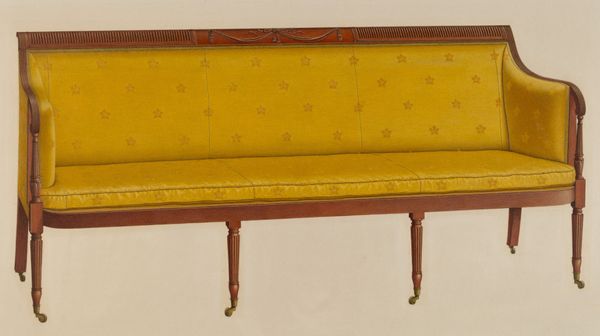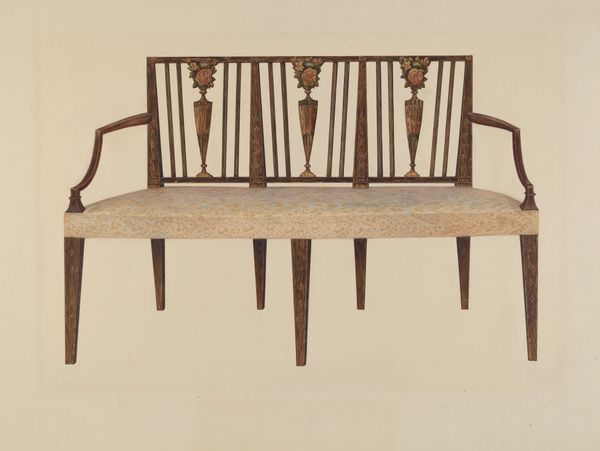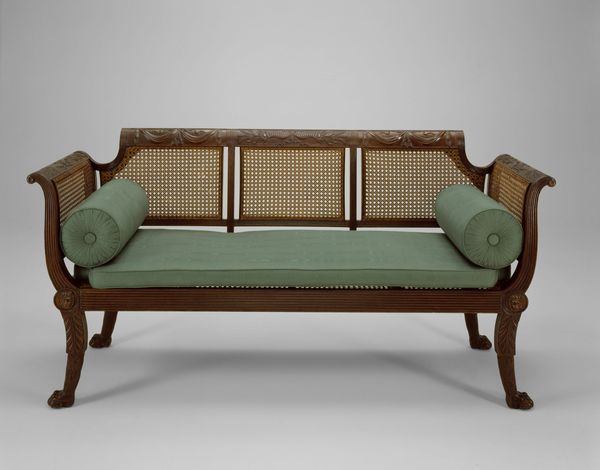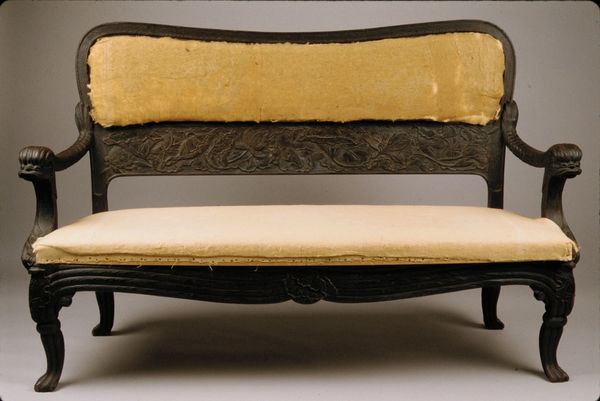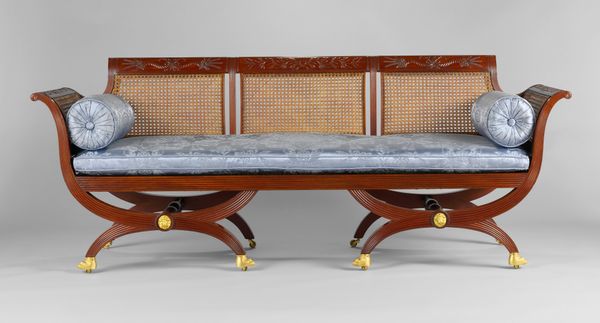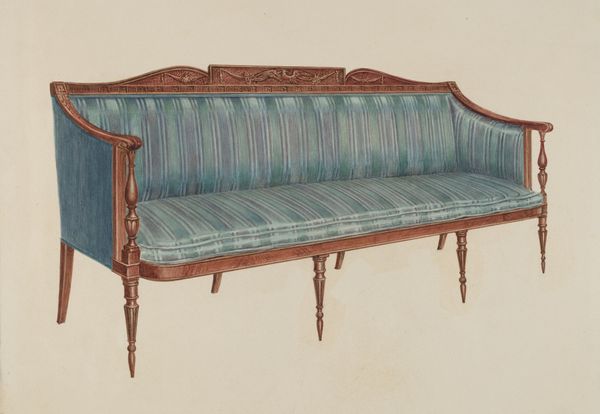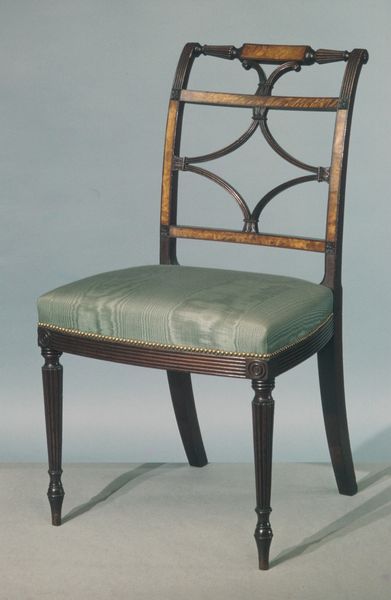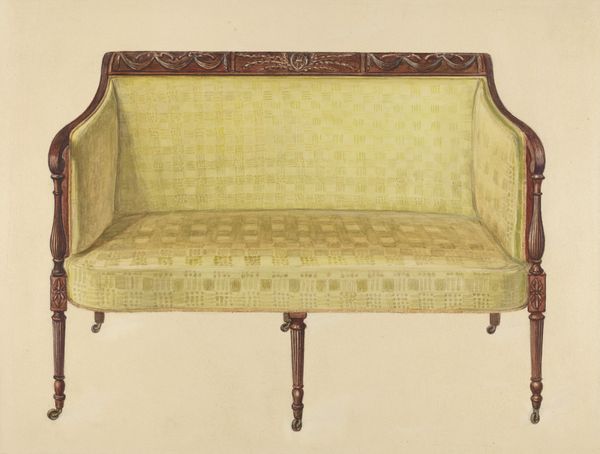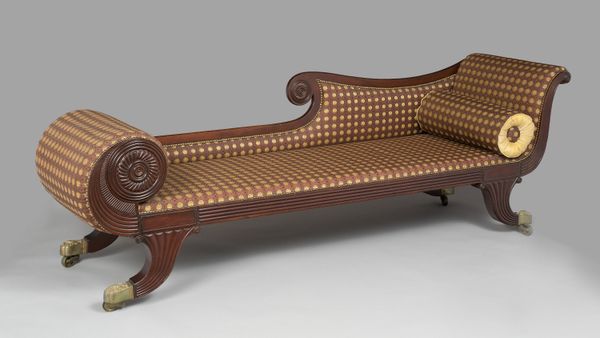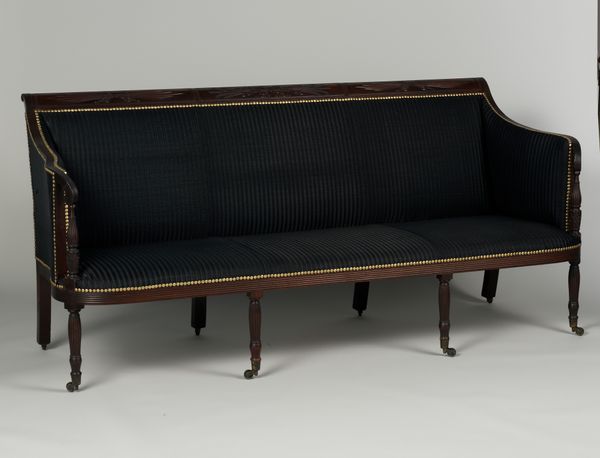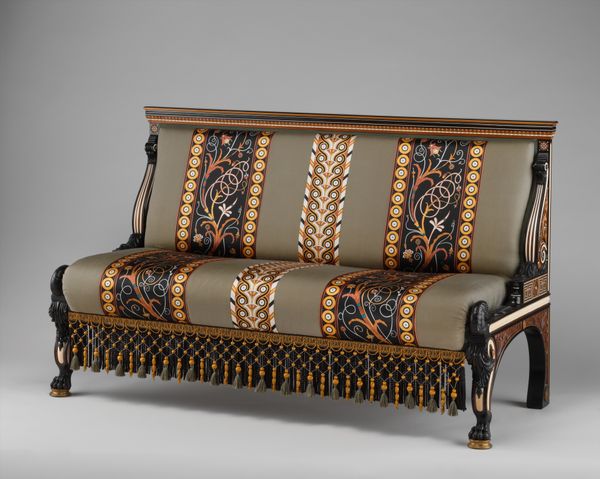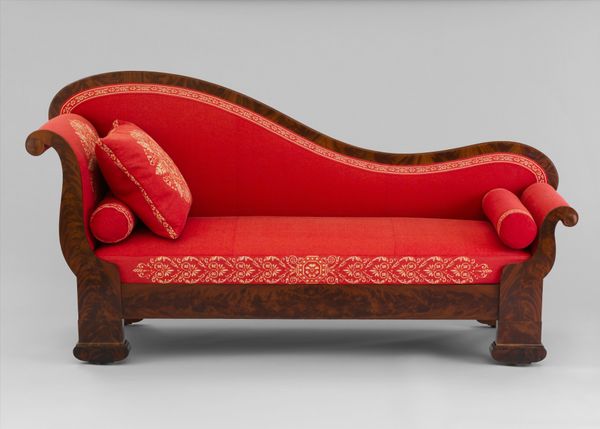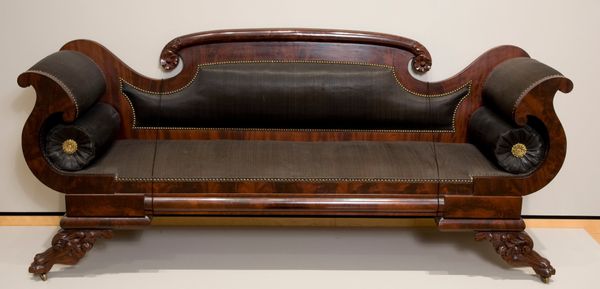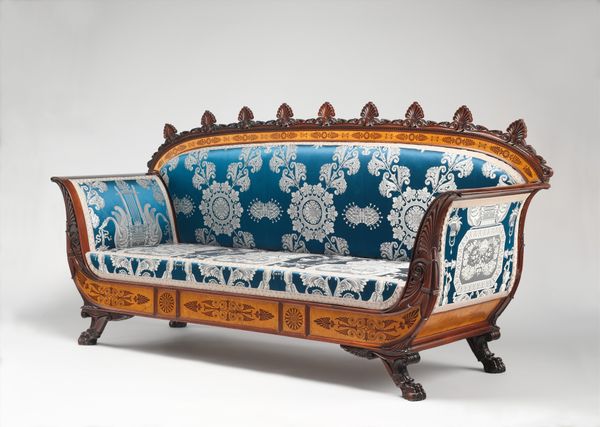
carving, wood
#
neoclacissism
#
carving
#
furniture
#
united-states
#
wood
#
decorative-art
#
decorative art
Dimensions: 29 5/8 x 74 x 24 in. (75.2 x 188 x 61 cm)
Copyright: Public Domain
Editor: So, here we have "Sofa," created by Duncan Phyfe between 1810 and 1820. It’s currently housed here at the Metropolitan Museum of Art. It's made from carved wood. What I immediately notice is how elevated even functional furniture was in that period. How do you see this piece, looking at its history and materiality? Curator: I see a complex story of labor and material transformation. Consider the mahogany – likely sourced through colonial trade routes, the very routes fueled by exploited labor. The sofa’s elegant form hides a history of extraction and production. How were these materials originally acquired, and what human cost was exacted to transform raw wood into such a refined piece? Editor: That's a pretty dark undercurrent. I was too caught up with the Neoclassical design to even consider that. So, who was benefiting from the production of a luxury object like this? Curator: Precisely. Think about Phyfe's workshop: skilled artisans, yes, but also part of a larger economic system. This sofa isn’t just an object of beauty; it represents the distribution of wealth, the power dynamics embedded in its creation, and the consumer culture of early 19th-century America. It prompts us to think about consumption and how it related to colonial and early American exploitation of materials. What about the choice of material, do you see the economic importance within that? Editor: The choice of expensive materials reflects that society's values and probably reinforces a certain social hierarchy... it really wasn't something made to be accessible to all. Curator: Right! The 'Sofa' exemplifies how design can serve as a lens through which we critically examine not just aesthetics, but social and economic relations. It compels us to think about who benefits and who is exploited in the process of creation and consumption. Editor: Well, I'll never look at antique furniture the same way again. Thank you.
Comments
No comments
Be the first to comment and join the conversation on the ultimate creative platform.
